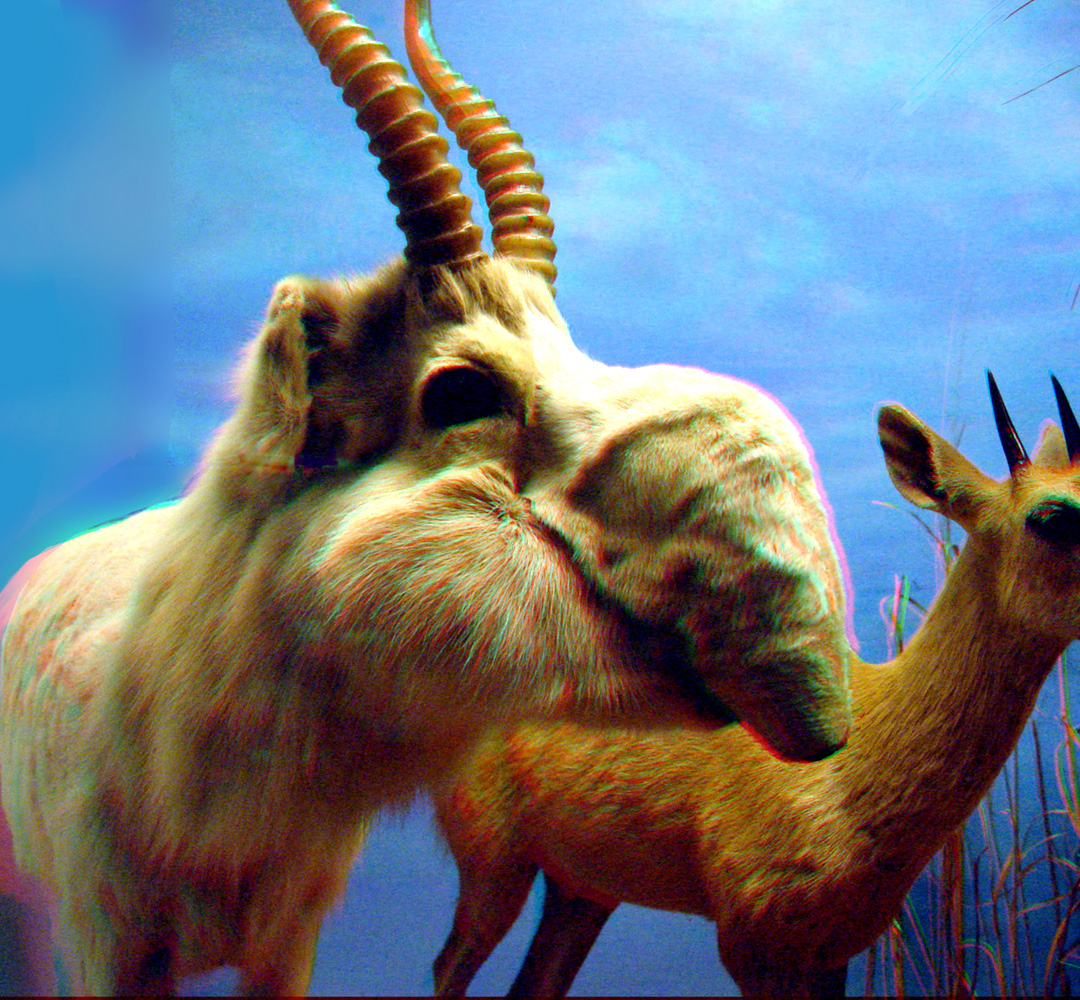Adaptation
The Saiga population is made up of non-domestic ruminants.
Ruminant digestion is an adaptation they have used to cope with
their often harsh environments. Some live in geographical
areas that often have direct and parching heat. Also, ruminant
digestion better suits their foraging behavior, and allows them to
digest food that is generally indigestible by other organisms
(Hoffman, 1989). These two characteristics, accompanied by
opportunity and pressure from their surroundings to adapt, ruminants
like the Saiga tatarica have two critically important capabilities.
Alterations to the alimentary canal to better correspond with their
specialized diet is the first of these (Hoffman, 1989). The
alimentary canal is the path that food must travel from mouth to
anus in most animals. Absorption, secretion, and a multitude
of chemical breakdowns of substances take place in this canal.
One could hypothesize that the Saiga tatarica’s alimentary canal has
superior fiber digestion to most organisms. This animal is
also capable of breaking down complex cellulose. The second
ability they have retained is the everlasting flexibility of being
able to adapt as their environment is altered and the seasons
change. The Saiga tatarica goes one step further than the rest
though, and it has been said that even the individual organism’s
digestive abilities are capable of evolving (Hoffman, 1989).
The Saiga tatarica have a distinct mating call in which they create
a roaring sound through their noses (Sokolov, 1974). It is
speculated that the noses of this antelope-like creature evolved
over time becoming larger and larger in response to the need to
remove a plethora of dust particles that will collect in their
nostrils during the migration of large herds. Given this
information it is not a far stretch to hypothesize that the larger
the nose the Saiga has the greater its ability for making the nasal
mating call. This would be a reproductive strategy in
obtaining a mate. An even more complex adaptation of this
organism is the reorientation of the insertion point for the scapula
(Sokolov, 1974). When the Saiga are moving across terrain
they prefer to hold their head horizontally which allows them the
greatest range of motion for their front limbs, the bones of which
extend from the shoulder girdle down.
Image taken from: http://commons.wikimedia.org/wiki/File:Saiga_Antelope.jpg
Please continue on the journey of learning about Saiga by moving to the reproduction page, or return to the home page.
